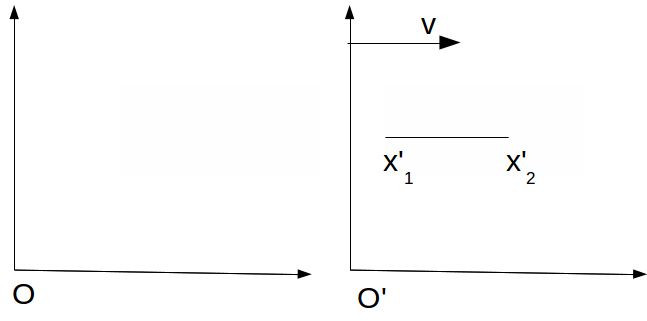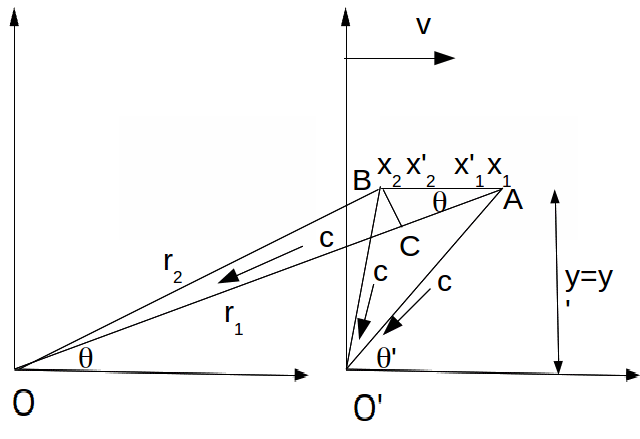Consider a rod at rest in an inertial frame O', with O' moving at speed![]() along the x axis of an inertial frame O. If the length of the rod in O' is
along the x axis of an inertial frame O. If the length of the rod in O' is![]() then in the inertial frame O, an observer will measure the length of the rod to be
then in the inertial frame O, an observer will measure the length of the rod to be![]()

This is not the same as the length of the rod perceived by an observer in O.

A camera at rest at the origin of O takes a photograph of the rod at![]() when the origins of O and O' coincide.
when the origins of O and O' coincide.
The light from the end A of the rod takes a time![]() to reach O so the light from A was actually emitted at
to reach O so the light from A was actually emitted at since it reaches the origin of O at
since it reaches the origin of O at![]()
Applying the Lorentz transformation to the emission of the light pulse at A gives![]()
Similarly the light from end B of the moving rod is emitted at so
so![]()
Subtracting these gives![]()
From the diagram above![]() so
so
